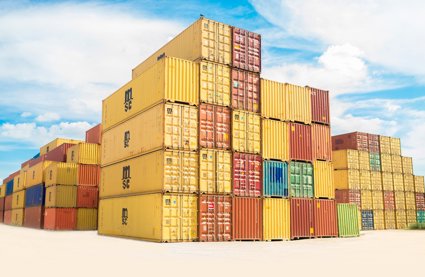
Where do we go to buy our stuff?
This lesson looks at different types of retailing and the social and environmental impacts of building these sites
Key questions
What are the different types of retailing?
What social and environmental impacts do these sites of comsumption bring about?
What are the different types of retailing?
Convenience store: Local store such as a newsagent or small grocer. Usually sells only cheap everyday items (called ‘low-order' goods) to small numbers of people from perhaps just a few local streets.
Comparison store: Store found in the Central Business District (CBD) of a town, usually selling more expensive (high-order goods) that are not required every day. Includes book shops, shoe shops and electrical shops. Often, comparison stores are ‘chain stores', for example Robert Dyas.
Street market: In some places, vegetables and other foods can be bought from street markets on some days of the week. Other goods, such as clothes, are also sold this way. Street markets are common in older parts of large cities and are sometimes targeted at up-market consumers, for example organic farmers' markets.
Out-of-town superstore: A very large branch of a retail chain, often found at the edge of a town or city in a retail park. The largest stores (over 2500 m2) are called hypermarkets.
Retail park: An area that has been set aside at or near the edge of a town or city where out-of-town stores can group together. Sometimes large structures such as the Bluewater shopping centre are built, where retailers can be housed.
‘Metro' store: This is the latest trend in retailing and comprises a scaled-down inner city supermarket, often attached to a petrol station. These stores are accessible and encourage people to shop while they refuel or pick up some items on the way home from work.
What social and environmental impacts do these sites of consumption bring about?
The rise in disposable incomes has generated a demand for goods which could not be met by existing shops in town centres. This is because of the shortage of land in the CBD, and the high land values. As a result, chain brands such as Sainsbury's, Tesco, Marks and Spencer and Ikea - along with others - sought planning permission to build large new stores on the edges of towns and cities.
The growth of out-of-town stores has been helped by other factors. Unlike in the past, the majority of the public now have access to a car, while roads have been improved and widened in many towns and cities over the last thirty years. This has helped to make shopping sites at the edges of settlements very easily accessible for most people. There are now over 1000 supermarkets, hypermarkets and retail shopping centres in the UK. Ikea has only three stores in the south east, but it hopes to cater for all London homes with these, suggesting that all Londoners are within reach of one of the stores. Huge warehouses at each site allow a diverse range of goods to be stocked in bulk.
Each of the retail types mentioned has its advantages and disadvantages, and a range of social and environmental impacts. The local high street may be accessible and beneficial for community cohesion, but land values are high and there may be traffic congestion and a lack of parking. On the other hand, out of town retail parks may provide a wide range of shops and ample parking, but their construction may have environmental implications (perhaps being built on green space), and they may not be accessible to some sectors of the community, for example the elderly. The local convenience store may be accessible, but it will not stock a wide range of products and will be in direct competition with the new metro supermarkets. Will it take enough revenue to survive, and if it doesn't, what are the implications again for less mobile members of the community?
Links
Starter
Where would you and your family go to buy the following items?
-
Bread
-
Shoes
-
A new PC or TV
Give the name of the shop and its location (which town it is in).
Now compare your answers with the people sitting around you. What different locations and types of shops are mentioned?
Main Activity
Where do we go to shop?
Take a look at the definitions document or the types of retailing presentation, which define the different types of shops and retail outlets that you can visit.
See if you can work out which category the shops you listed in the starter activity fall into.
How have shopping locations changed over time?
Working in pairs, look up the history of one of today's major retailers, for example Tesco, Sainsbury's or Marks and Spencer. Write a short summary of how the company has grown and changed over time.
Why do you think this has happened? Use your knowledge from the last lesson to answer this question. The growth of out of town shopping centres document might also help you.
What is the ‘Food Network' of our local store?
Download the food networks document, which shows where a range of groceries that you might buy at your local supermarket have originated from. Follow the instructions on the sheet to create a map which shows how far all the items have travelled to their final destination. You'll need a blank outline map of the world for this activity. You can download one for free from the Maps International website.
What are advantages and disadvantages of each type of shopping experience?
Complete the comparing shopping environments activity to think about the advantages and disadvantages of the different places that we shop. Remember to include both social and environmental factors.
Plenary
Leisure-time for many people involves spending money at shopping centres at the weekend.
What leisure activities can you think of that do not require you to spend any money? Are there many?
File nameFiles
File type
Size
Download